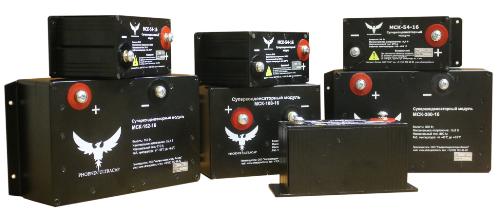Categories: Featured Articles » Interesting electrical news
Number of views: 40842
Comments on the article: 8
What are supercapacitors
Ionistors, supercapacitors, ultracapacitors - the history of the creation and development of technology
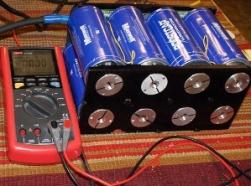 On June 7, 1962, Robert Reitmayer, a chemist at the American Standard Oil Company (SOHIO) in Cleveland, Ohio, filed a patent application detailing the mechanism for storing electrical energy in a double-layer capacitor.
On June 7, 1962, Robert Reitmayer, a chemist at the American Standard Oil Company (SOHIO) in Cleveland, Ohio, filed a patent application detailing the mechanism for storing electrical energy in a double-layer capacitor.
If in conventional capacitor Since aluminum plates were traditionally insulated with a dielectric layer, in the embodiment proposed by the inventor, the emphasis was placed directly on the material of the plates. The electrodes had to have different conductivity: one electrode had to have ionic conductivity, and the other - electronic.
Thus, in the process of charging a capacitor, there would be a separation of electrons and positive centers in the electronic conductor, and separation of cations and anions in the ionic conductor.
The electronic conductor was proposed to be made of porous carbon, then the ionic conductor could be an aqueous solution of sulfuric acid. In this case, the charge would be stored at the interface of these special conductors (the same double layer). The potential difference of these first ionistors could reach a value of 1 volt, and the capacitance - units of farads, because now the distance between the plates was less than 5 nanometers.
In 1971, the license was transferred to the Japanese company NEC, which at that time was engaged in all areas of electronic communication. The Japanese were successful in promoting technology to the electronics market called "Supercapacitor".
Seven years later, in 1978, Panasonic, in turn, released the Gold Capacitor, which also gained success in this market. The success was ensured by the convenience of using ionistors to power the SRAM volatile memory. However, these ionistors had high internal resistance, which limited the ability to quickly extract energy, and therefore greatly narrowed the range of applications.
In 1982, specialists at the American Pinnacle Research Institute (PRI), located in Los Gatos, California, working on improving electrode and electrolyte materials, developed extremely high energy density ionizers that appeared on the market under the name “PRI Ultracapacitor” .
After 10 years, in 1992, Maxwell Laboratories (later changed its name to Maxwell Technologies, San Diego, California, USA) began to develop PRI technology called "Boost Caps". The goal now was to create high-capacity capacitors with low resistance in order to be able to power powerful electrical equipment.
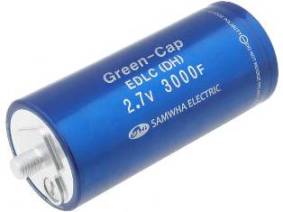
Fig. 1. SAMWHA ELECTRIC supercapacitor DH5U308W60138TH
In 1999, Taiwanese company UltraCap Technologies Corp. She also began collaborating with PRI, who had developed an extremely large area electrode ceramic by then, and by 2001 Taiwan's first high-capacity ultracapacitor was launched. From this moment, the active development of technology began in many research institutes of the world.
There are also players on the Russian market, so the company Ultracapacitors Phoenix (UKF LLC) is an engineering company specializing in the design, development, production and practical application of solutions and systems based on supercapacitors / ionizers. The company works in close conjunction with the best world manufacturers and actively takes over their experience.
The use of ionistors
Ionistors per farad units have received well-deserved use as backup power sources in many devices.Starting with the power of the timers of TVs and microwave ovens, and ending with complex medical devices. As a rule, ionistors are installed on memory cards.
When changing the battery in a video or camera, the ionistor supports the power of the memory circuits responsible for the settings, the same applies to music centers, computers and other similar equipment. Phones electronic electricity meters, security alarm systems, electronic measuring instruments and medical devices - supercapacitors have found application everywhere.
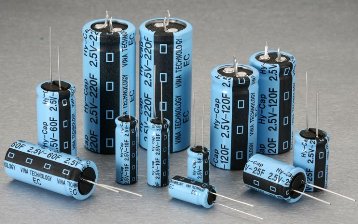
Fig. 2. Supercapacitors (ionistors)
Small organic electrolyte ionistors have a maximum voltage of about 2.5 volts. To obtain higher permissible voltages, the ionistors are connected into batteries, necessarily using shunt resistors.
The advantages of ionistors include: high charge-discharge rate, resistance to hundreds of thousands of recharge cycles compared to batteries, low weight compared to electrolytic capacitors, low toxicity, discharge tolerance to zero.
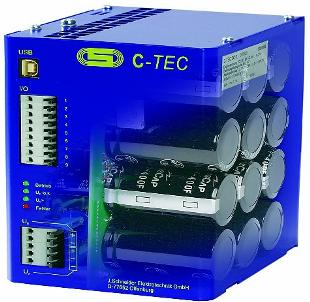
Fig. 3. Uninterruptible power supply on supercapacitors
Fig. 4. Supercapacitor car modules
Prospects
In the development of ionistors, their specific capacity is increasing more and more, and in all likelihood, sooner or later this will lead to the complete replacement of batteries with supercapacitors in many technical fields.
Recent studies by a team of scientists at the University of California at Riverside have shown that a new type of ionistor is based on a porous structure, where ruthenium oxide particles are deposited on graphenesuperior to its best counterparts almost twice.
Researchers have discovered that the pores of “graphene foam” have nanosizes suitable for holding particles of transition metal oxides. Ruthenium oxide supercapacitors are now the most promising option. Safe working on an aqueous electrolyte, they provide an increase in stored energy and increase the permissible amperage by a factor of two compared to the best ionistors available on the market.
They store more energy for every cubic centimeter of their volume, so it would be advisable to replace the batteries with them. First of all, we are talking about wearable and implantable electronics, but in the future, the novelty can also be based on personal electric vehicles.
Graphene is deposited on layers of nickel, which acts as a support for carbon nanotubes, which together with graphene form a porous carbon structure. Particles of ruthenium oxide with a diameter of less than 5 nm penetrate into the obtained nanopores of the latter from an aqueous solution. The specific capacity of the ionistor based on the resulting structure is 503 farads per gram, which corresponds to a specific power of 128 kW / kg.

Fig. 4. Charger on a graphene supercapacitor
The ability to scale this structure has already laid the foundation and laid the foundation for creating the ideal means of storing energy. Ionistors based on “graphene foam” successfully passed the first tests, where they showed the ability to recharge more than eight thousand times without deterioration.
See also at bgv.electricianexp.com
:

